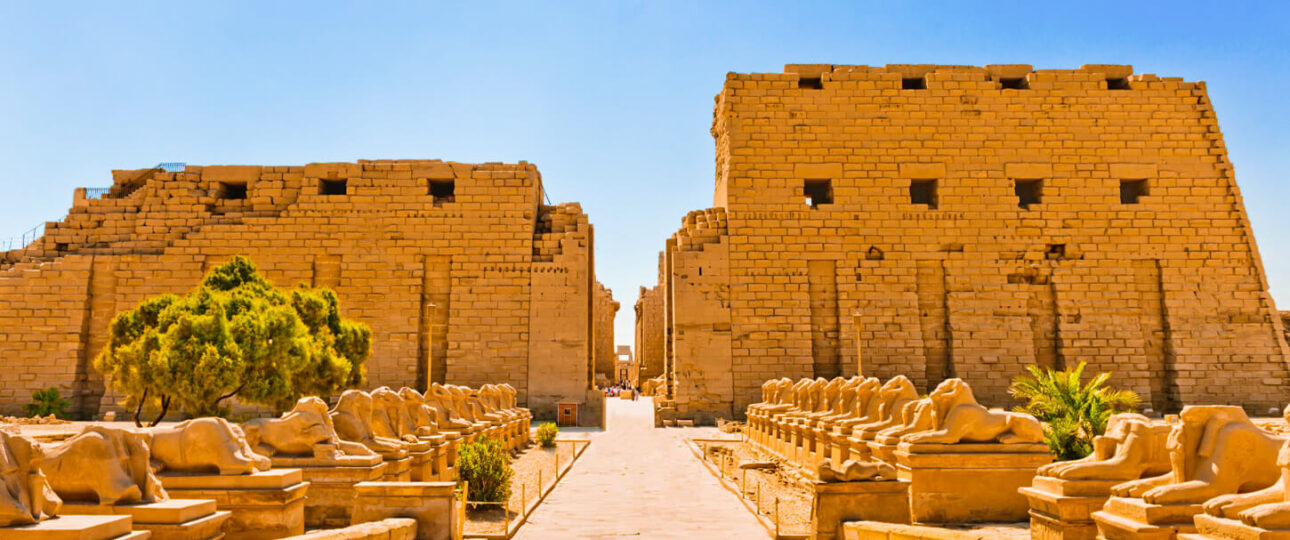Karnak Temple: Unveiling the Grandeur of Ancient Egypt
Step back in time and immerse yourself in the splendor of Karnak Temple, an architectural marvel situated in Luxor, Egypt. Known as the “Most Select of Places” in ancient Egyptian texts, Karnak Temple is a vast complex of sanctuaries, towers, and chapels dedicated to various deities, most notably the powerful Amun-Ra. In this article, we will explore the wonders of Karnak Temple, unraveling its history, architecture, religious significance, and much more.
- Don’t miss out on our Best Time to Travel to Egypt
Karnak Temple: A Testament to Ancient Egyptian Devotion
Karnak Temple’s construction commenced during the Middle Kingdom, and it remained a continuous project for over 2,000 years, showcasing the devotion of various pharaohs to the gods they worshipped. The complex served as the primary religious center of ancient Egypt, attracting pilgrims and devotees from all corners of the empire.
The Great Hypostyle Hall: A Forest of Stone Columns
As we venture into Karnak Temple, the magnificent Great Hypostyle Hall leaves us stunned. This colossal hall features 134 massive columns arranged in 16 rows, reaching heights of up to 80 feet. These pillars’ intricate carvings and hieroglyphics recount the pharaohs’ military triumphs and religious ceremonies.
The Obelisks: Monuments of Ancient Egyptian Engineering
Karnak Temple is adorned with several obelisks, towering monoliths that served as symbols of the sun god Ra. The most famous among them is the obelisk of Queen Hatshepsut, standing tall at an impressive 97 feet. These obelisks were carved from single granite blocks and transported from distant quarries to Karnak with remarkable precision.
The Sacred Lake: Rituals of Purification
The Sacred Lake is an essential element of ancient Egyptian temple design within the complex. This sizeable rectangular pool was used for ceremonial purification by the priests before engaging in sacred ceremonies. The tranquil waters of the lake added to the spiritual ambiance of Karnak Temple.
Karnak Temple’s Connection with Luxor Temple
Karnak and Luxor Temple were once connected by the impressive Avenue of Sphinxes, forming a ceremonial pathway used during religious processions. Although parts of the avenue are now in ruins, its historical significance remains profound.
Karnak Temple’s Role in the Opet Festival
Like Luxor Temple, Karnak Temple also played a central role in the Opet Festival. During this annual event, Amun, Mut, and Khonsu statues would be carried from Karnak to Luxor Temple, symbolizing the gods’ renewal and blessings for the kingdom.
The Karnak Sound and Light Show: Reliving History
One of the best ways to experience Karnak Temple’s allure is through the Sound and Light Show held in the evenings. This captivating spectacle uses multimedia technology to narrate the temple’s history, bringing the ancient past to life in a mesmerizing display of lights and sounds.
The Conservation Efforts: Preserving Egypt’s Treasures
Over the years, Karnak Temple has faced various threats, including natural elements and human interventions. However, dedicated efforts by archaeologists and conservationists have led to extensive restoration and preservation projects, safeguarding the temple’s grandeur for future generations.
FAQs about Karnak Temple
Who built Karnak Temple?
Karnak Temple’s construction began during the Middle Kingdom, with various pharaohs contributing to its expansion over centuries.
What is the significance of the Great Hypostyle Hall?
The Great Hypostyle Hall served as a grand religious gathering place and showcased the military achievements of the pharaohs.
What were the obelisks used for?
The obelisks in Karnak Temple were symbolic monuments dedicated to the sun god Ra.
How deep is the Sacred Lake?
The Sacred Lake of Karnak Temple is around 40 meters deep.
What is the best time to visit Karnak Temple?
Karnak Temple is best visited early or late afternoon to avoid the intense heat.
Are there guided tours available at Karnak Temple? Yes, guided tours are available, and they offer valuable insights into the temple’s history and significance.
- Also Read Our Landmarks in Egypt
Conclusion
Karnak Temple is a monumental tribute to ancient Egyptian art, culture, and devotion to their gods. Its sprawling architecture, the Great Hypostyle Hall’s grandeur, and the obelisks’ symbolism leave visitors in awe of the ancient civilization’s engineering prowess and spiritual beliefs. A visit to Karnak Temple is not just a journey through history; it is an immersive experience that resonates with the soul and reminds us of the enduring legacy of Egypt’s glorious past.

